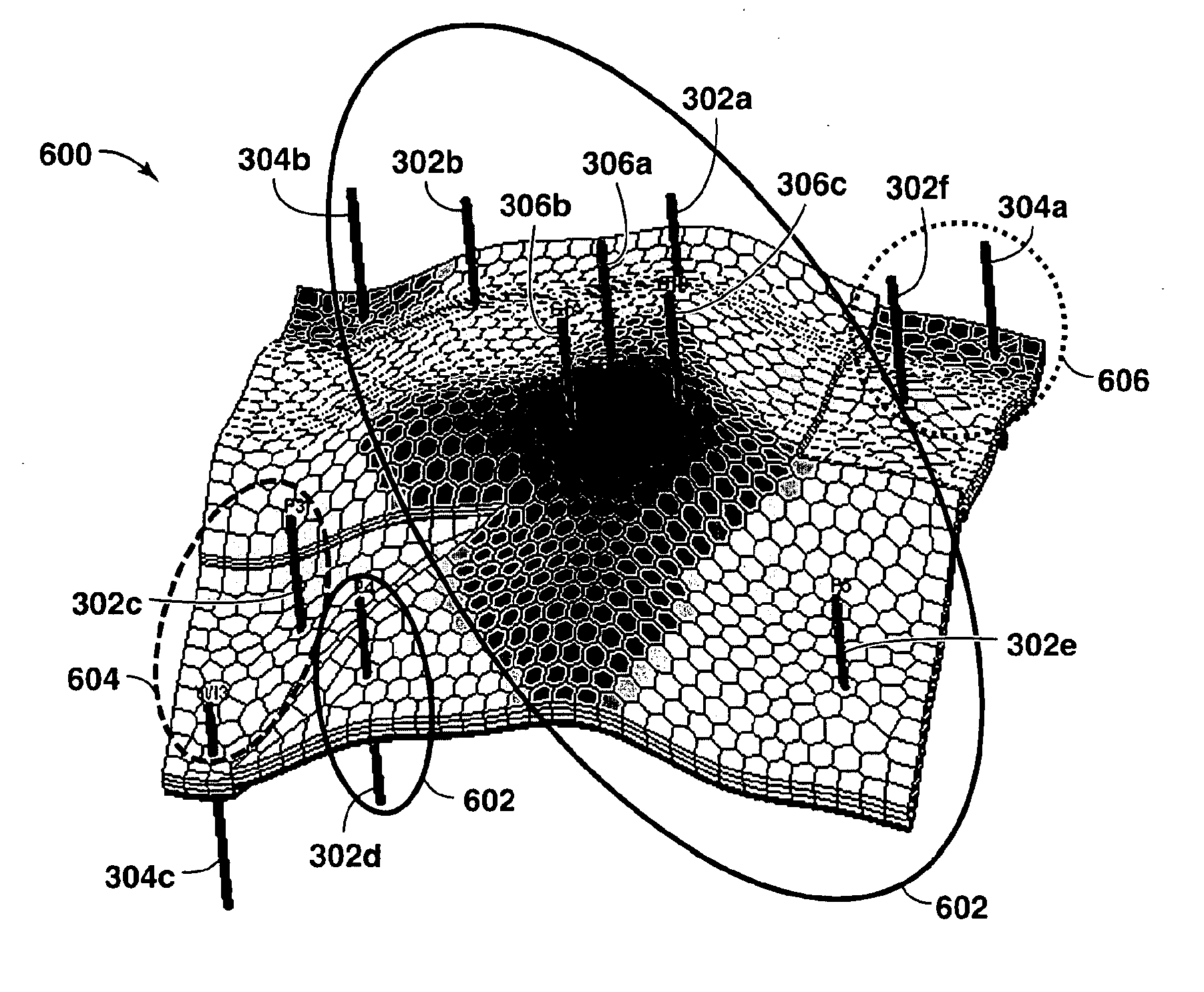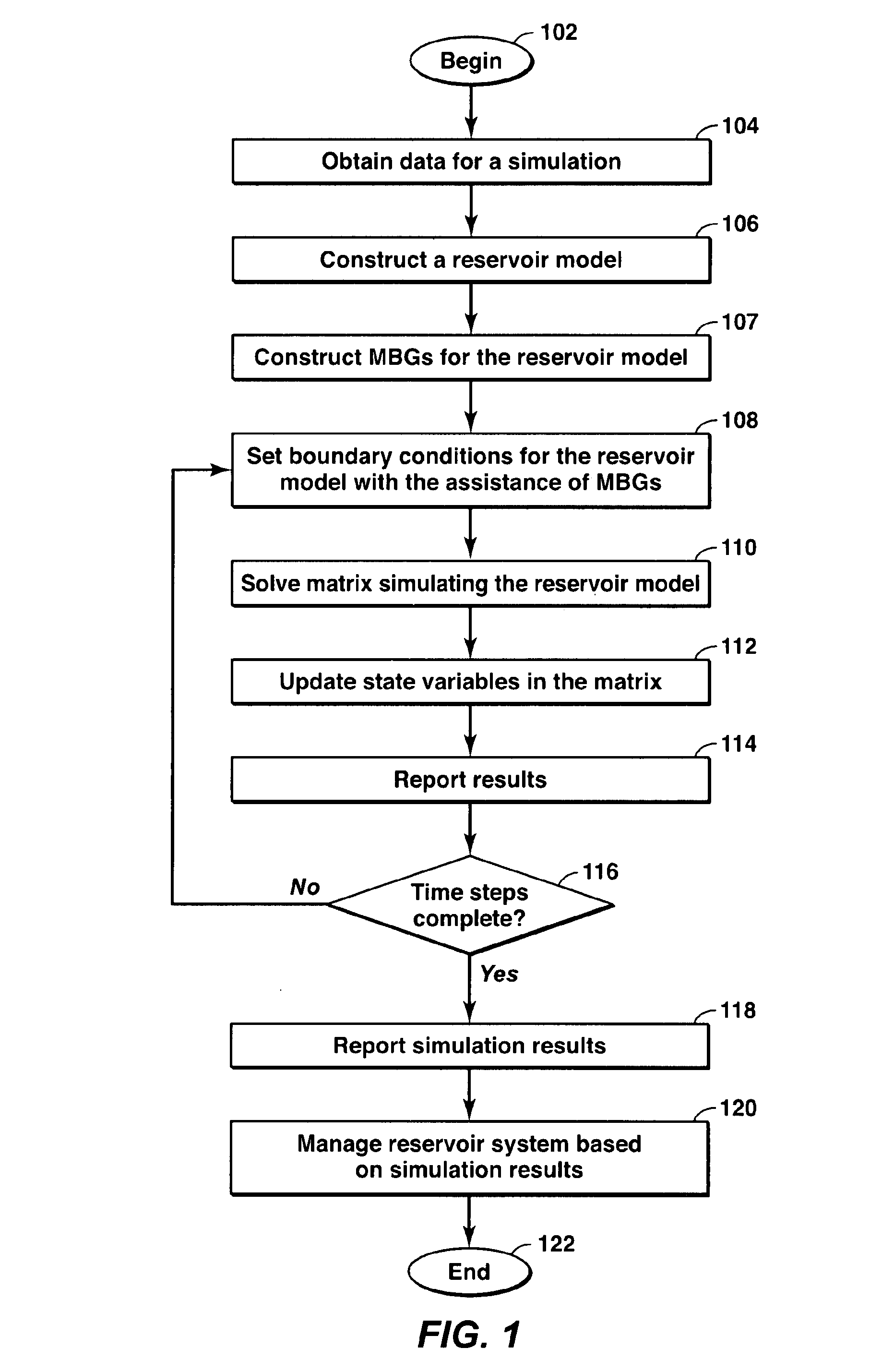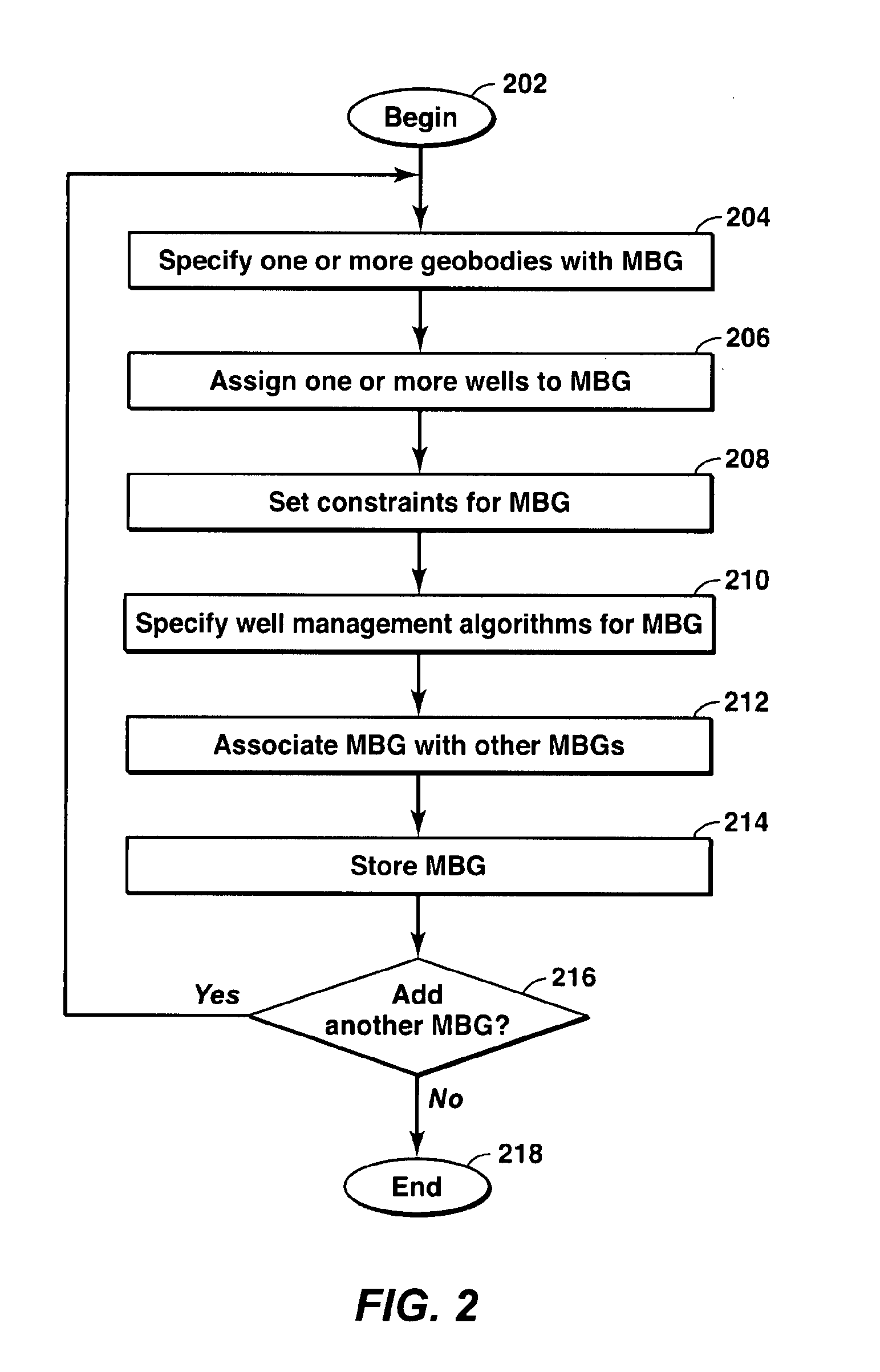Modeling And Management of Reservoir Systems With Material Balance Groups
a technology of material balance and reservoir system, applied in seimology for waterlogging, instruments, borehole/well accessories, etc., can solve the problems of large volume drop, time delay in any change, and further limitation of determinations
- Summary
- Abstract
- Description
- Claims
- Application Information
AI Technical Summary
Benefits of technology
Problems solved by technology
Method used
Image
Examples
Embodiment Construction
[0044]In the following detailed description section, the specific embodiments of the present techniques are described in connection with preferred embodiments. However, to the extent that the following description is specific to a particular embodiment or a particular use of the present techniques, this is intended to be for exemplary purposes only and simply provides a concise description of the exemplary embodiments. Accordingly, the invention is not limited to the specific embodiments described below, but rather, it includes all alternatives, modifications, and equivalents falling within the true scope of the appended claims.
[0045]The present technique is directed to a method or system for modeling and managing a hydrocarbon reservoir. Under the present techniques, material balance groups (MBGs), which are software representations of logic and algorithms, are utilized to develop and to implement a well management strategy in a reservoir simulator for a reservoir system. MBGs may ...
PUM
 Login to View More
Login to View More Abstract
Description
Claims
Application Information
 Login to View More
Login to View More - R&D
- Intellectual Property
- Life Sciences
- Materials
- Tech Scout
- Unparalleled Data Quality
- Higher Quality Content
- 60% Fewer Hallucinations
Browse by: Latest US Patents, China's latest patents, Technical Efficacy Thesaurus, Application Domain, Technology Topic, Popular Technical Reports.
© 2025 PatSnap. All rights reserved.Legal|Privacy policy|Modern Slavery Act Transparency Statement|Sitemap|About US| Contact US: help@patsnap.com



